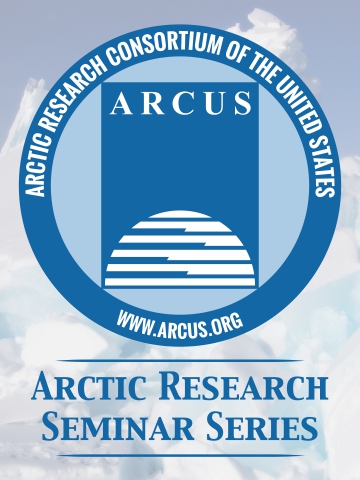Speaker: Charlie Paull, Monterey Bay Aquarium Research Institute (MBARI)

ARCUS invites registration for the next Arctic Research Seminar featuring Charlie Paull, Monterey Bay Aquarium Research Institute (MBARI), titled "Decomposing Submarine Permafrost in the Canadian Beaufort Sea". The seminar will be held via Zoom.
Registration is required for this event. Instructions for accessing the webinar will be sent to registrants prior to the event.
Seminar Abstract
Sediments beneath the Arctic continental shelf are undergoing substantial warming. This warming is associated with the sea level transgression at the end of the last ice age, when relatively warm ocean water flooded over a much colder terrestrial periglacial landscape. The warming is still propagating down into subsurface sediments causing the glacial-aged permafrost wedge to thin and retreat landwards. Models of the impact of transgression on subsea permafrost have recognized the potential existence of a slowly moving groundwater system that carries waters seaward under the extensive glacial-age relict permafrost bodies hosted within shelf sediments. Pore waters sampled in 50 sediment cores taken from 90 to 1000 meter water depths along the shelf edge and upper slope of the Canadian Beaufort Sea freshen with sub-bottom depth, suggesting near-seafloor sediments are pervasively bathed in brackish water. Their isotopic composition suggests relict permafrost is the source for the freshening waters along the shelf edge. High-resolution bathymetric surveys of the shelf edge of the Canadian Beaufort Sea reveal a remarkable coalescence of seafloor morphologic features (e.g., slump-scars, submarine-pingos, and steep-sided closed depressions) in the areas where these waters are emerging. Repeat mapping also shows multiple new steep-sided depressions that developed in the 9-year-long interval between surveys. The largest is 28 meters in depth and 220 meters across. These morphological changes occur near the maximum seaward limit of the submerged glacial-age permafrost and are attributed to groundwater flow, ascending along the relict permafrost boundaries and inducing segregated ice in relict permafrost to melt.
Speaker Bio
Charlie Paull presently holds a position as a Senior Scientist at the Monterey Bay Aquarium Research Institute (MBARI). He is a marine geologist with ~45 years of experience studying seafloor morphology, sediment transport, and pore water geochemistry to understand the processes that shape continental margins. In recent years he has focused on the utilization of Autonomous Underwater Vehicles and Remotely Operated Vehicles to image, observe, and sample the seafloor. Through collaborations with colleagues at the Geological Survey of Canada, Fisheries and Oceans Canada, and the Korean Polar Research Institute, he as participated in seven expeditions to the Canadian Beaufort Sea. On all these expeditions MBARI’s robotic tools have been utilized to investigate seafloor geomorphic features that may have geohazard implications.
